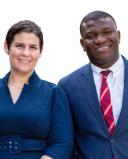Cognitive Behavioral Therapy
Cognitive Behavioral Therapy and Suffering
The Belief-Result Pathway helps us fully appreciate how things really work.
Posted December 15, 2020
For the past six decades or so, thanks to the application of Cognitive Behavioral Therapy (CBT), we have fully understood why and how individuals behave the way they do.[1] We have been able to find ways to help them both in the short-term and in the long-term. And, we’ve been able to help them gain transferable skills; skills that they can use in different contexts, and for different aspects of their lives.
But how does that really work? What is the mechanism of all this?
The short answer is in the CBT model of thoughts, feelings, and behaviors. The long answer is in the Belief-Result Pathway. While the CBT model helps give a shortcut to what’s going on, the Belief-Result Pathway helps us fully appreciate how things really work, giving us more options and more places to intervene, especially when working with those who have failed to benefit from prior trials of CBT. This Pathway also helps clinicians better help their clients capture and understand the world.
The Belief-Result Pathway is bidirectional, and its components make up the elements of CBT. Let us then start citing the components of the Pathway, defining each one of them, while also outlining the relationship among them.
Let’s start with the origin of the Pathway and go beyond the completion of the Pathway to ensure a comprehensive understanding. From the least hidden (obvious) to the most hidden (or obvious), we have, in this order, our:
- Trifactor/Triad Phenomenon (Genetic/Experience (Environment/Memories) Epigenetics)
- Ordinary/Normal Blueprint
- Belief
- Attitude and Values/Preferences
- Perception (Internal)
- Meaning/Interpretation/Story
- Focusing/Attention/Associations
- State/Emotion/Feeling
- Response/Action/Behavior
- Habit
- Result/Identity
From the least hidden (obvious) to the most hidden (or obvious), we simply ought to go in reverse which can help us appreciate how the Pathway is circular.

Now, let us operationalize five of the primary components of the Pathway:
1. Belief: Is related to:
- A long-standing thought
- Formed from the unconscious through a rehearsal process
- Created through the practice of a thought
- Results from a regular, frequent, and intense thought repetition
- Repetition, practice, or rehearsal may have taken place either at a conscious or an unconscious level
- That which determines our attitude and values
2. Attitude: Is related to:
- Outlook
- Viewpoint
- Mindset
- Frame of mind
- Internal representation of one’s state of mind
- Perspective
- Where one is looking from
- Internal representation of how one thinks
- That which determines one’s perception
3. Perception: Is related to:
- Perceiving
- Seeing
- Looking
- How one sees or looks, based on one’s attitude or state of mind
- That which determines one’s meaning and interpretation
4. Meaning: Is related to:
- Interpretation
- Story
- That which determines why one focuses on what
- That which determines how one focuses on that which one focuses on
- Salience
- Explanation
- Reading
- Prominence
5. Focus: Is related to:
- Center
- Center of interest
- Focal point
- Attention
- Center of attention
- Point of convergence
- That which one eventually sees and looks
- That which determines associated thoughts
- That which determines which state of mind gets activated; which mood gets displayed; which emotions get associated; and therefore, which feelings are shown
What does that all mean? It means the following:
- Who we are, our self-concept, is shown through our identity, which derives from our results
- Our results derive from our habits
- Our habits derive from our behaviors, actions, or responses when repeated
- Our behaviors are influenced by our feelings, emotions, or states of mind
- Our feelings or emotions are determined by what we focus on, how we focus on that which we focus on, and our associated thoughts
- What we focus on and how we focus on it is determined by our assigned meaning
- Our assigned meaning is determined by our perception
- Our perception is determined by our attitude
- Our attitude is determined by our belief
- Our belief, which reinforces our identity, which in turn, further reinforces our beliefs about ourselves, derives from our Normal Blueprint
- Our Normal Blueprint comprises of our Biology, our Psychology, and the process of Epigenetics. The Normal Blueprint is naturally superseded by our Natural Blueprint, and
- Our Natural Blueprint comprises of the Three Fundamentals, namely, The Fundamental of Mind, The Fundamental of Thought, and The Fundamental of Consciousness [2].
Needless to say, as we have articulated enough in previous articles, our thought is the Operant Factor. Our thought, when focused upon, drives our feelings, which, in turn, drives our behaviors. Now, of course, the reverse is also true, though there is a caveat.
The caveat is this:
If we work on our clients’ beliefs and shift them, any shift in behaviors and feelings will automatically take place.
On the other hand, if we work on our clients’ behavior, alone, we have enough tools to help them shift their behaviors, especially through Behavior Substitution. This behavior shift may lead to a shift in belief, but such a shift in belief will be rather temporary, for the shift in belief was only because, at an unconscious level, our clients wanted to avoid cognitive dissonance [3]. Once the conflict is over, the clients are more likely to return to their baseline beliefs.
All this is great news:
It means, through CBT, we can help our clients short-term, relieving their suffering, without the side effects of many medications, while working with them long-term and address their belief systems.
References
[1] Martin, B. (2019, June 19). In-Depth: Cognitive Behavioral Therapy. Retrieved December 14, 2020, from https://psychcentral.com/lib/in-depth-cognitive-behavioral-therapy/
[2] Sidor, M., MD, & Dubin-McKnight, K., PhD, LCSW. (2020, November 25). The 3 Fundamentals Behind Our Biology and Our Psychology. Retrieved December 14, 2020, from https://www.psychologytoday.com/intl/blog/pain-loss-and-suffering/20201…
[3] Leonard, J. (2019, October 19). Cognitive dissonance: Definition, effects, and examples (1127713597 850517302 T. Legg Phd, Ed.). Retrieved December 14, 2020, from https://www.medicalnewstoday.com/articles/326738




